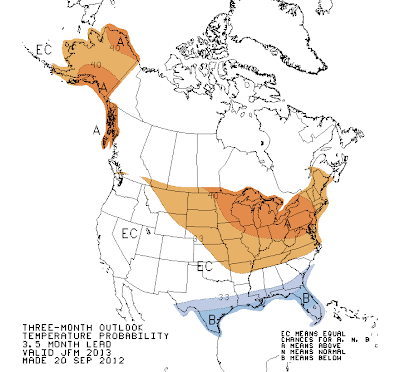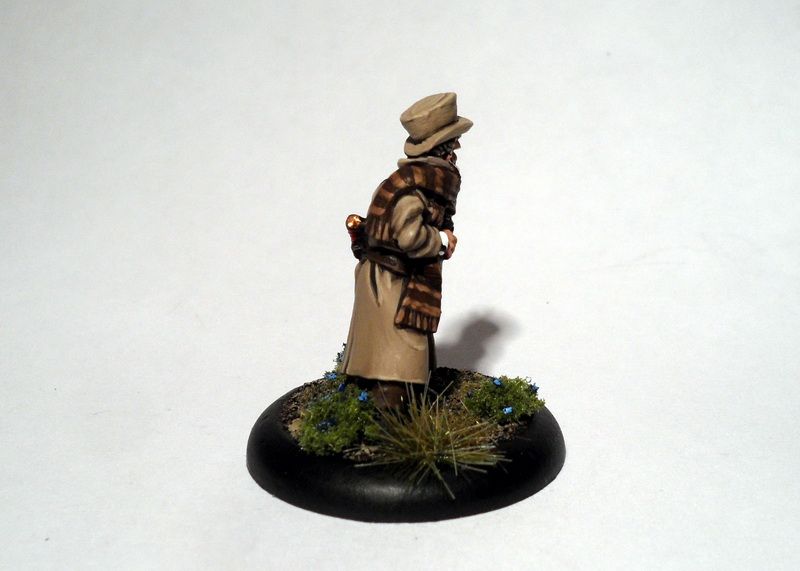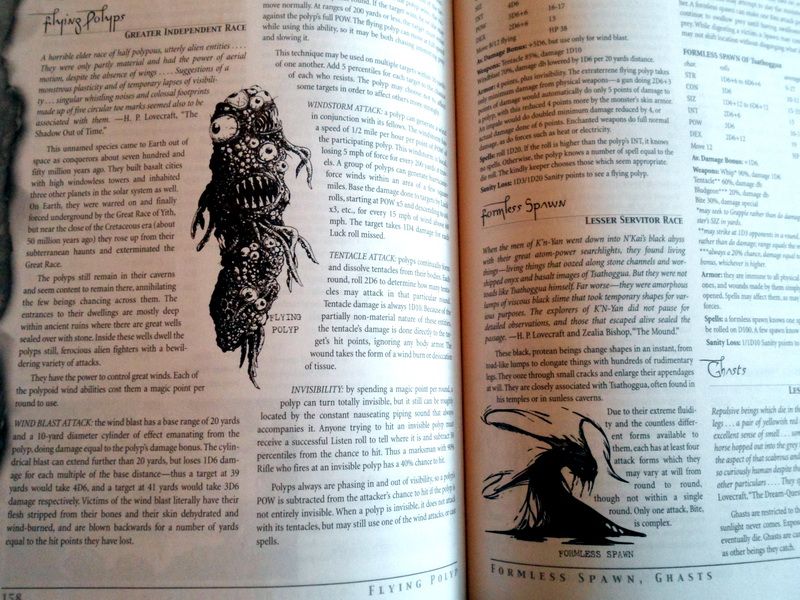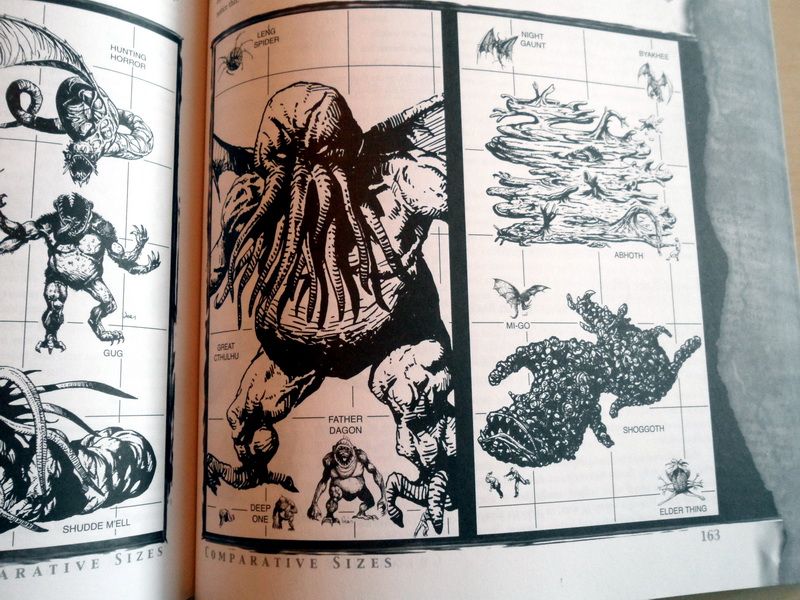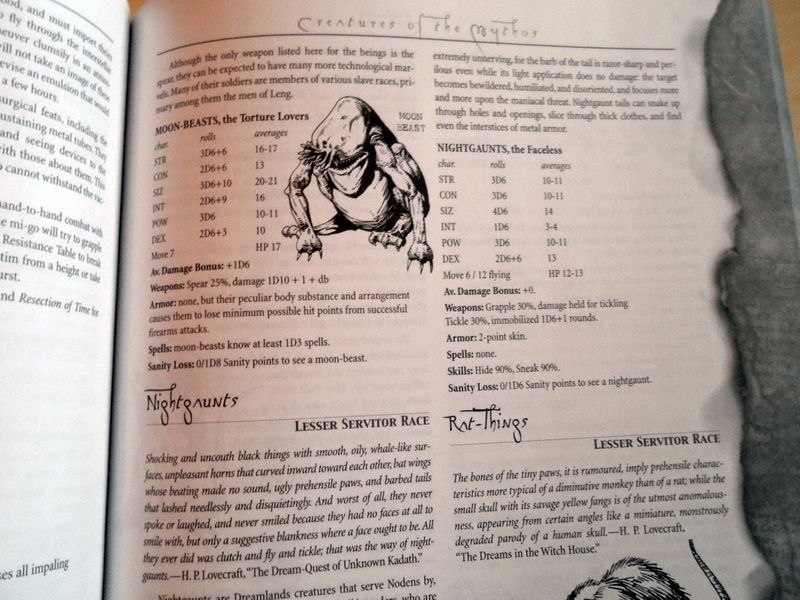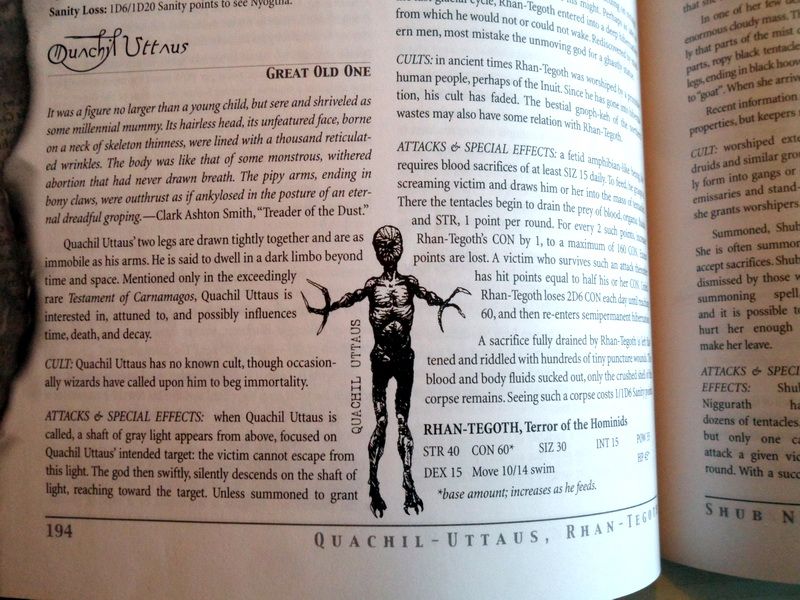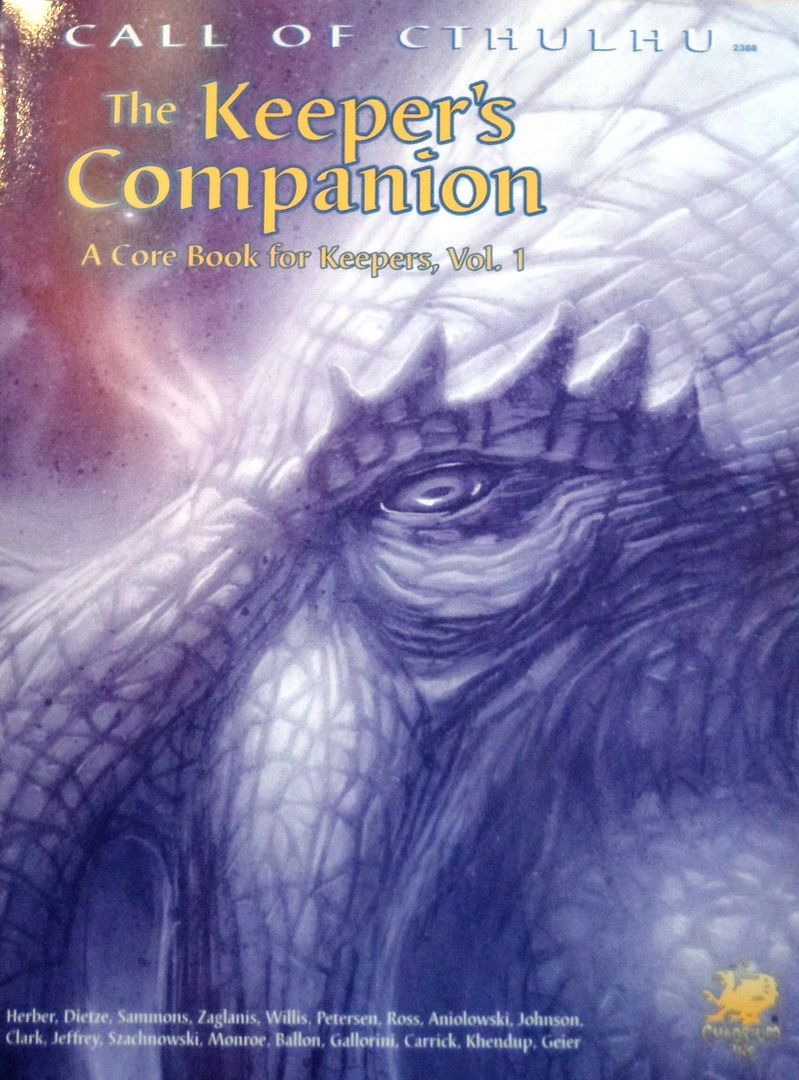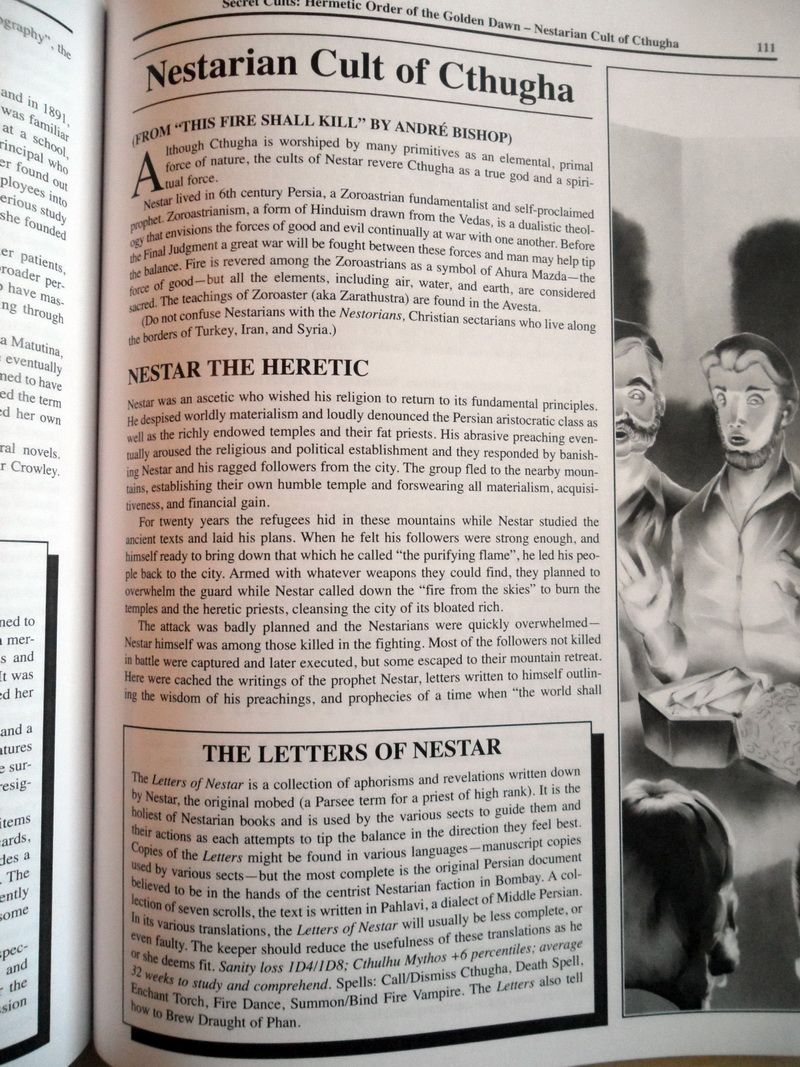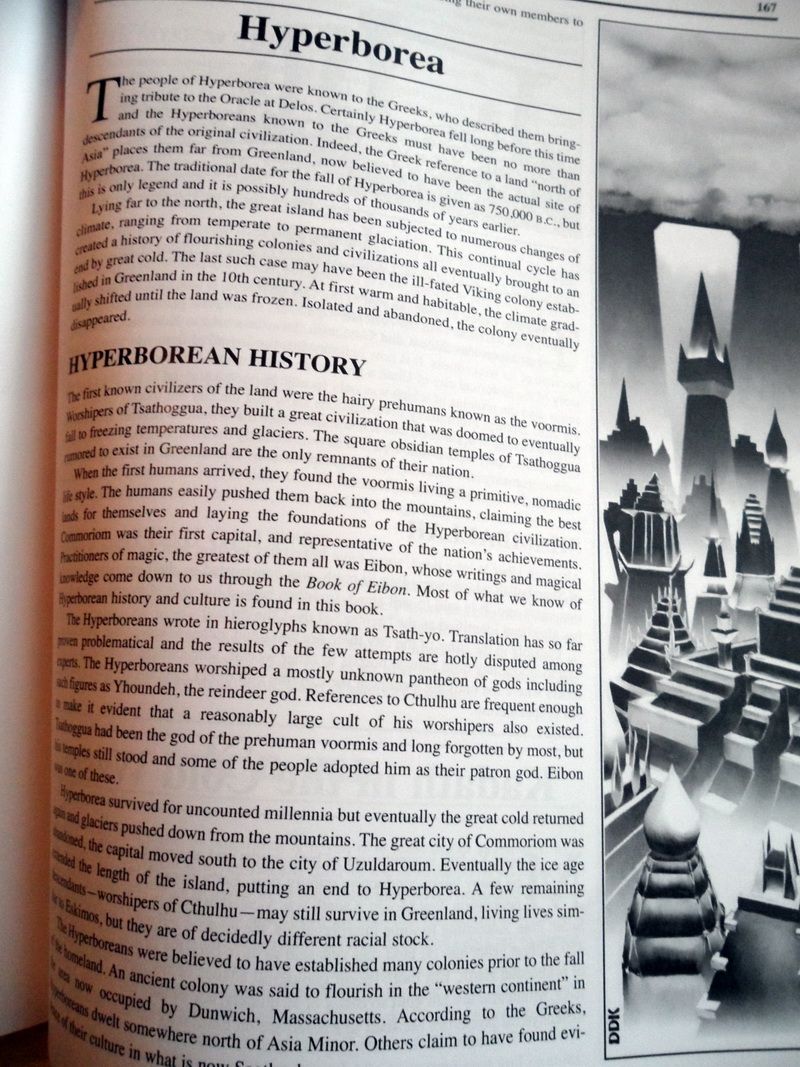A few months ago I thought GSN was betting the house on online gaming. The network wasn't developing any new game shows and seemed to be using the cable TV operation as an aging cash cow. But that was before American Bible Challenge and Steve Harvey's Family Feud starting blowing the Nielsen doors off.
Now I'm not so sure. GSN president David Goldhill and friends may figure there's a little life left in those doddering old TV game shows. But it was still interesting to read about GSN hiring former Zygna exec Jeff Karp for its online gaming operations.
GSN has actually seen declines in its Facebook game traffic, though Karp points out that lots of other online developers have the same problem. At least Karp realizes that game show brands give GSN a natural niche online. He even mentions Wheel of Fortune.
I really can't blame GSN for using the online operations to hedge its bets on the cable network. Online is growing, cable TV is stagnant. And how often will lightning strike with numbers like the Bible quizzer has generated?
Sunday, September 30, 2012
Vector Game Icon Wishlist?

If you ever need a source of vector icons for your board game prototypes, I highly recommend The Noun Project. They have an extensive crowdsourced collection of vector icons released on public domain or Creative Commons Attribution licenses. You can now also purchase attribution-free licenses for a nominal fee.
There are some gaps in the collection when it comes to common game icons. There is a meeple, but a very limited supply of dice and definitely no "victory points." I just uploaded an icosahedron, better known as a the 20-sided die or d20.
I'd love to upload some more generic game icons, but where to begin? What would you want most? I posed this question to my Twitter friends and got lots of suggestions.
- die faces 1-6, ?
- fan of cards 1-5
- players 1-5
- tiles in various shapes
- victory points in various shapes
- time: 15min, 30min, 45min, 60min…
- ages
- players: 1, 2, 3…
- bid
- most/least
And there were some other suggestions that stretched the boundaries of "noun" into "verb," so may not be allowed on the Noun Project. I'm checking with those in charge to get their say.
- gain/lose points
- gain/lose goods
- draw x cards
- keep x cards
- discard x cards
- steal cards from another player
- flip card
- pass
- flip
And of course, I'd be happy to make a whole bunch of these icons into one big dingbat font for a few bucks. If you know of a good Mac tool for making a font, I'd be glad to try it out. I've already used fontifier, but I wasn't quite satisfied with the results.
So, any other game icons you would want to see in this suite?
Another Gentlemen's club member (EotD)
Another "Membership", this one has a "Deadwood" look to me and could easily be used for Old West games.
I went with blue "flowers" on the bases for the Gentlemen's club - so I went back and fixed the prof. Erazmus and the Clockwork butler bases while I was at it.
More Gentlemen's Club minis coming up.
I went with blue "flowers" on the bases for the Gentlemen's club - so I went back and fixed the prof. Erazmus and the Clockwork butler bases while I was at it.
More Gentlemen's Club minis coming up.
Saturday, September 29, 2012
Tough to replace
To absolutely nobody's surprise, Let's Ask America didn't do so swell in its quest to replace the hallowed Jeopardy/Wheel of Fortune duo.
At least the first day numbers from September 17 weren't too encouraging. Deadline Hollywood reports that all seven Scripps stations which replaced the Big Two syndie game shows saw huge ratings drops in the affected time periods of 31%-67%. Meanwhile, Jeopardy and Wheel of Fortune prospered on the first day of their new seasons. They got very nice increases in ratings compared to their year-ago numbers and their lead-in shows, despite losing the seven Scripps outlets.
Of course, other stations in all the affected markets picked up the Big Two shows. So folks in those cities could watch Pat and Vanna and Alex as usual. I really don't know how successful the Scripps experiment in cheaper homegrown programming will be. But the early returns don't look good.
UPDATE: To give Let's Ask America some credit, Variety has some better news for the show. In its first two weeks, the survey-fest averaged 1.7 and 1.8 household ratings in its markets. Hardly monster numbers but reasonably acceptable for such a low-cost show. Let's Ask America also skewed relatively young for a traditional game show.
At least the first day numbers from September 17 weren't too encouraging. Deadline Hollywood reports that all seven Scripps stations which replaced the Big Two syndie game shows saw huge ratings drops in the affected time periods of 31%-67%. Meanwhile, Jeopardy and Wheel of Fortune prospered on the first day of their new seasons. They got very nice increases in ratings compared to their year-ago numbers and their lead-in shows, despite losing the seven Scripps outlets.
Of course, other stations in all the affected markets picked up the Big Two shows. So folks in those cities could watch Pat and Vanna and Alex as usual. I really don't know how successful the Scripps experiment in cheaper homegrown programming will be. But the early returns don't look good.
UPDATE: To give Let's Ask America some credit, Variety has some better news for the show. In its first two weeks, the survey-fest averaged 1.7 and 1.8 household ratings in its markets. Hardly monster numbers but reasonably acceptable for such a low-cost show. Let's Ask America also skewed relatively young for a traditional game show.
The Winter Forecast and a Wimply El Nino
KPLU, which broadcasts my weekly weather segment, is having their annual pledge drive. Please help them here if you can. Unlike the other Seattle public radio station, KPLU has short pledge drives and doesn't run million dollar surpluses!
The main tool used by meteorologists to predict the nature of the weather months ahead is the correlation of the temperature of the tropical Pacific ocean surface and the atmospheric circulation around the globe. To put it another way, meteorologists use the correlation of the El Nino and La Nina cycle (called ENSO-El Nino Southern Oscillation in the business) with midlatititude weather. This correlation is not perfect, but it is the most potent tool we have for predicting a few months ahead.
As with any good tool, you need to know how to use it, as well as its limitations.
One key rule is: don't make your winter predictions too early! A lot of research, including that of UW's Todd Mitchell, have shown that one really needs to wait until very late summer to have real skill for predicting the character of the upcoming winter. Thus, I like to wait until late September: by this time we can have high confidence that we have a handle on the general nature of El Nino/La Nina for the winter months. So I feel comfortable giving you a prediction at this point. A second thing to keep in mind is that this tool is imperfect, explaining perhaps a third to a half of the winter variability.
OK, enough caveats and warnings. Let me give you the story!
For the last two years we have been in a La Nina situation (colder than normal central and eastern tropical Pacific sea surface temperatures), which is generally associated with greater mountain snowpack, colder temperatures, and increased chances of lowland snow, particularly after Jan 1. And generally it delivered---Cascade snowpacks have been high and our last two springs were dismally cool and wet. But this year La Nina has collapsed and the tropical Pacific has warmed, leading to a weak El Nino. This graph shows the sea surface temperature anomalies (differences from climatology, blue colder than normal, orange is warmer) for several tropical Pacific regions (the Nino 3.4 region is the most used) since October 2011. We have a pretty wimpy El Nino at this point (anomalies only about .5C) and lately it has weakened substantially.
At this point in time, we would expect this winter to be an El Nino one, simply on the basis of persistence---since it takes a while for the ocean temperatures to shift.
But we have more sophisticated tools.
First, there are a series of models--some statistical, some simulating the ocean/atmosphere system--that provide a forecast of what is happening over the tropical Pacific. Here is a nice collection that I accessed on the NOAA Climate Prediction Center website. Most of the models suggest a slight warming (increase in El Nino) this fall, followed by a slow weakening. The definition of El Nino requires that the warm anomaly be at least .5C and we are just over that now and slide below it next Spring. If the anomaly is between plus or minor .5C of normal then we are in a neutral or "La Nada" year.
The National Weather Service also runs their global coupled atmosphere/ocean model (the CFS) out many months. Here is what it is showing. Same wimpy, marginal El Nino, and on the verge of being a La Nada year.
But this El Nino/ENSO stuff is interesting perhaps, but what you REALLY want to know is what we expect for the upcoming winter, right?
First, the bottom line. El Nino years tend to produce Northwest winters that are warmer than normal, drier than normal, with less than normal mountain snowpack and a lower probability of lowland snow. They tend to be less stormy here, with more of the action going into California.
The greatest impacts are generally after January and the strength of the effect is dependent on the warmth of the tropical Pacific. The following graphics illustrate the impact across the U.S. of El Nino's during January though March. The first shows preciptation--a really modest decline over the NW and an increase over the southwest U.S.
For temperature, warming over the northern tier of states.
The issue, of course, is that this is looks like a very weak El Nino at this point and the impacts will be thus attenuated. The result: less signal and thus less forecasting skill.
We could easily be a near neutral situation (La Nada) the end of the winter, and those can be interesting periods, since the biggest of the big events (floods, windstorms, even snowstorms) tend to occur in neutral years.
So keep your eyes on the tropical Pacific temperatures--perhaps our models will be wrong.
Finally, the Climate Prediction Center takes this information and combines it with other guidance (decadal trends, impacts of large scale surface characteristics, etc) and comes up with a long-period prediction. Here is their forecast for January to March for precipitation and then temperature. They are going for a drier than normal winter after January 1, but keep the warmth east of the NW.
Gentlemen's club member (EotD)
Shamed myself into getting started with the Gentlemen's club miniatures which have been sitting on my desk for what seems forever. Truth to be told I wasn't inspired enough to paint them and I tried to come up with ideas on colors and such. As it turns out that solved itself once I started painting.
Each faction has a couple of "heroes" and "minions". The Gentlemen's club is mainly made up of what is called "Membership", regular members. I will paint these in various shades of brown/earthy colors, and paint the President, Vice President and Secretary in brighter colors and patterns to have them look real "dandy". This way the minions of the gang will be tied together while the leaders will pop out.
Here's the first guy. I won't be distracted by any other projects while I paint these as I really want to finish my Empire of the Dead miniature collection and the Gentlemen are the last part of that.
Each faction has a couple of "heroes" and "minions". The Gentlemen's club is mainly made up of what is called "Membership", regular members. I will paint these in various shades of brown/earthy colors, and paint the President, Vice President and Secretary in brighter colors and patterns to have them look real "dandy". This way the minions of the gang will be tied together while the leaders will pop out.
Here's the first guy. I won't be distracted by any other projects while I paint these as I really want to finish my Empire of the Dead miniature collection and the Gentlemen are the last part of that.
The utility of rhetoric
This one is for Ted, who has moral qualms about the use of rhetoric. I'm not going to appeal to Aristotle's authority, but will simply caution against blithely dismissing the man's reasoning... and note that he seems to have anticipated at least a part of Ted's objections by a few thousand years. Note that he defines rhetoric as: "the faculty of observing in any given case the available means of persuasion."
Rhetoric is useful because things that are true and things that are just have a natural tendency to prevail over their opposites, so that if the decisions of judges are not what they ought to be, the defeat must be due to the speakers themselves, and they must be blamed accordingly. Moreover, before some audiences not even the possession of the exactest knowledge will make it easy for what we say to produce conviction. For argument based on knowledge implies instruction, and there are people whom one cannot instruct.Therefore, I conclude that the wise man who is capable of dialectic will not restrict himself to its use, but will also utilize rhetoric when that is a form of communication more suitable to both the audience and the situation. As for morality, it is worth noting that the first kind of rhetoric depends upon the personal character of the speaker. It is neither moral nor immoral in itself, its morality depends upon how it is used.
Here, then, we must use, as our modes of persuasion and argument, notions possessed by everybody, as we observed in the Topics when dealing with the way to handle a popular audience. Further, we must be able to employ persuasion, just as strict reasoning can be employed, on opposite sides of a question, not in order that we may in practice employ it in both ways (for we must not make people believe what is wrong), but in order that we may see clearly what the facts are, and that, if another man argues unfairly, we on our part may be able to confute him....
[I]t is absurd to hold that a man ought to be ashamed of being unable to defend himself with his limbs, but not of being unable to defend himself with speech and reason, when the use of rational speech is more distinctive of a human being than the use of his limbs. And if it be objected that one who uses such power of speech unjustly might do great harm, that is a charge which may be made in common against all good things except virtue, and above all against the things that are most useful, as strength, health, wealth, generalship. A man can confer the greatest of benefits by a right use of these, and inflict the greatest of injuries by using them wrongly.
It is clear, then, that rhetoric is not bound up with a single definite class of subjects, but is as universal as dialectic; it is clear, also, that it is useful. It is clear, further, that its function is not simply to succeed in persuading, but rather to discover the means of coming as near such success as the circumstances of each particular case allow.
Friday, September 28, 2012
Fridaygram: underwater views, disappointing squid, space move

By Scott Knaster, Google Developers Blog Editor
If you’re making a map of the world, you have to pay attention to the large fraction of the planet that’s beneath the water. That’s why Google Maps now includes underwater panoramic images from around the oceans. Naturally, there are a lot of wonderful sights to see, including a sea turtle with a school of fish and an ancient boulder coral. And just for fun, you can watch an underwater hangout from the Great Barrier Reef, without traveling to Australia or getting wet.
We don’t know if Google Maps has yet captured an image of a vampire squid (Vampyroteuthis infernalis). But researchers have found that this creature, whose name means "vampire squid from hell", has been more than a little overhyped. The vampire squid doesn’t hunt victims for blood. Instead, it eats random detritus floating around in the ocean. Still: great name!
Finally, the people who operate the International Space Station have a lot to do, such as making sure it doesn’t plow into any space junk. With that excellent goal in mind, NASA was considering moving the ISS this week to avoid an old satellite and a piece of rocket in its path. How do you move the ISS? By firing the engines of a docked cargo ship, of course!
Fridaygram posts are mostly for fun, not necessarily for developer stuff like our posts the rest of the week. This week Google turned 14 years old, and like lots of others its age, Google is already learning how to drive.
The Everywheres, a story game inspired by Jenny Everywhere
I met Jenny Everywhere earlier this year and I've wanted to make a game about her ever since. Jenny Everywhere (aka "The Shifter") is an open source, public domain character originally created by Canadian comic book artist Steven Wintle. He and his friends created Jenny Everywhere as a truly public domain character that anyone can use, but no one owned.
According to most stories, Jenny Everywhere exists in every reality, can shift between realities, and pull stuff from other realities as needed. Thus, Jenny has appeared in hundreds of comics, stories, and fan art.
I am a huge fan of parallel universe stories, so Jenny was a natural source of inspiration. I've been wanting to write a properly fleshed out Jenny Everywhere story game for ages, but I just haven't found the time. So for now here's my pitch for a Jenny Everywhere story game.
 |
| © Nelson Evergreen |
BACKGROUND
Across the multiverse, there are four groups: The Everywheres, The Nowheres, The Anywheres, the Somewheres. Here's a basic outline:
- The Anywheres want to branch out the multiverse as much as possible. They are experimental, creative and reckless.
- The Nowheres want to trim down the branches to create a stable, linear multiverse. They are cautious, curious and stubborn.
- The Somewheres are regular people, stuck in one reality, but sometimes dragged into the conflict.
- The Everywheres keep all three balanced, protecting the whole dang multiverse from too much creation/destruction. They're the heroes of our story. Each Everywhere is equipped with special multiverse goggles that allow her to see several possible outcomes at once, then she can choose the one she prefers.
THE SITUATION
The players are Everywheres, whose mission is to balance the multiverse. There is no central authority guiding the Everywheres. When Everywheres land in a verse, they just know something's not right.
- [Historical figure] [did something or didn't do something] which caused [world-changing event], benefiting [Firstname] [Anywhere/Nowhere].
- For example: Nikola Tesla invented a Death Ray which eventually leads to multiverse technology, benefiting Moriarty Anywhere.
SYSTEM
The game would use the Split Decision rules. In this case, the two colors represent branching paths of the multiverse. Choosing a blue result benefits the Anywheres. It creates a new branch in the multiverse, eventually leading to instability and chaos. Choosing a red result benefits the Nowheres. It limits possibility, eventually leading to stagnation and stasis.
Anyhoo, that's the loose outline. It still needs a pacing mechanic. I might do something with it some day, though. For now, enjoy!
How redBus uses BigQuery to master big data

By Pradeep Kumar, redBus
This guest post was written by Pradeep Kumar. Pradeep is a technical architect at redBus, an online travel agency in India that provides a unified online bus ticketing service. We recently published a business case study for redBus and wanted to dive into some more technical detail for the readers of the Google Developers Blog.
Our company has been providing Internet bus ticketing for India since 2006. There are more than 10,000 bus routes available for booking, and we have dozens of machines processing booking requests. Each step in the booking process produces a lot of data – on search terms, route availability, server health and more. We needed tools to to be able to process this data quickly and easily to determine whether decreases in customer bookings are the result of server problems or simply less demand.
While we typically use relational databases to store and analyze data, we knew we needed something more powerful if we wanted to analyze 500GB or more, so we started to look at open source frameworks like Hadoop and analysis platforms like Hive and Pig. We found that these frameworks require considerable in-house expertise and infrastructure investments and wouldn’t give us answers to our questions as fast as we wanted. We decided to try out Google BigQuery as a trusted tester, with hopes that it would give us the ability to perform quick iterative analysis without much up-front investment. Our initial tests went very well, so we started building our analysis tools on top of BigQuery.
BigQuery allows us to run SQL-like queries to understand the bus routes in highest demand and what types of searches users are performing. We’ve also used it to build internal dashboards that give us a snapshot of system health.
For more information on how we structured our immutable tables, pipelined our data into BigQuery for analysis using RabitMQ, and to see example SQL queries we’ve used, check out my article on developers.google.com.
Pradeep Kumar is a technical architect at redBus.
Posted by Scott Knaster, Editor
Labels:
bigquery,
guest post
Location:
Mountain View, CA, USA
Call of Cthulhu RPG inspirational reading material

 A follow up on my previous entry on Worlds of Cthulhu, having read the magazines I became interested in what more the RPG game Call of Cthulhu had to offer so I bought the main rulebook and a sourcebook. Just as with the Worlds of Cthulhu magazines these books make great reading material, almost like a encyclopedia of Lovecraft monsters, cults and everything else thematically connected to the weird horror of his novels.
A follow up on my previous entry on Worlds of Cthulhu, having read the magazines I became interested in what more the RPG game Call of Cthulhu had to offer so I bought the main rulebook and a sourcebook. Just as with the Worlds of Cthulhu magazines these books make great reading material, almost like a encyclopedia of Lovecraft monsters, cults and everything else thematically connected to the weird horror of his novels.The main rulebook, "Call of Cthulhu" contains a lot of information about the great Old ones and creatures dwelling in the dark corners of hte earth while the "Keepers companion" lists a lot of monsters, cults, characters, books and locations. Just as with the Worlds of Cthulhu magazine the books on their own make great reading material if you have an interest for Lovecraft stories and the "mythos" he has created.
There is a ton of useful stuff to pick from and use in games like pulp/horror games like Strange Aeons, especially if you are looking to create your own scenarios or have picked up a grotesque miniatures and don't have an idea what to do with it.
Great reading material and once again highly recommended if you are interested in these type of things.
Detachment is a DHV
Stingray explains:
It also offers an explanation for why warming to a woman often causes her to abruptly lose interest. Unless the man has displayed other DHV or otherwise maintained his authority, ceasing to be coldly detached also eliminates his perceived authority and therefore his high value. Conclusion: a man should not cease to be emotionally detached in a relationship with a woman until he has demonstrated sufficient additional high value or established additional authority that will persist regardless of the state of his emotional involvement with her.
Clinical detachment seems much more like criticism to woman. Cold detachment, given that it is so blunt, reacts extremely poorly with the solipsistic woman. One can only approach it with the same cold bluntness and if this is not something that a woman is good at, then it can be quite difficult to read.This observation on her part may help explain why ALPHA frame tends to require a level of indifference. Cold detachment is a relative DHV because the woman being subjected to it has a tendency to interpret it as the detached man holding a position of authority over her. Whether she responds obediently or in a rebellious manner to that perceived authority, she is responding to it, and therefore cannot easily dismiss the man as one of the masculine masses unworthy of her attention.
It also offers an explanation for why warming to a woman often causes her to abruptly lose interest. Unless the man has displayed other DHV or otherwise maintained his authority, ceasing to be coldly detached also eliminates his perceived authority and therefore his high value. Conclusion: a man should not cease to be emotionally detached in a relationship with a woman until he has demonstrated sufficient additional high value or established additional authority that will persist regardless of the state of his emotional involvement with her.
Thursday, September 27, 2012
Pain and suffering
As if Meredith Vieira didn't have some Nielsen pain to deal with on Millionaire, she also suffered a sore hand. Contestant Lee Yanco got a little overenthusiastic in a high-five with Meredith, and she received the "worst pain of my life."
Okay, she wasn't mortally wounded. She came back with a bandaged hand and a wisecracking attitude. Apparently her lawyers are on call.
Game show hosts have been known to take a few lumps. There's the classic if yucky video of Swedish hostess Eva Nazemson, who regurgitated on live TV because it was that time of the month. But give her credit. She explained the unpleasantness and continued with the show as if a little televised vomit was the most natural thing in the world. A real trooper.
Of course, sometimes the pratfalls are intentional. Gene Rayburn once rolled down the steps on Match Game because, what the hey, it made a good entrance. Gene was 57 when he did the full body roll, so he deserves some credit for physical flexibility.
Okay, she wasn't mortally wounded. She came back with a bandaged hand and a wisecracking attitude. Apparently her lawyers are on call.
Game show hosts have been known to take a few lumps. There's the classic if yucky video of Swedish hostess Eva Nazemson, who regurgitated on live TV because it was that time of the month. But give her credit. She explained the unpleasantness and continued with the show as if a little televised vomit was the most natural thing in the world. A real trooper.
Of course, sometimes the pratfalls are intentional. Gene Rayburn once rolled down the steps on Match Game because, what the hey, it made a good entrance. Gene was 57 when he did the full body roll, so he deserves some credit for physical flexibility.
Emily Cheats on JEF With Matt Leinart; America Has a New Sweetheart
By Finesse
The rumblings started last month. Today, the bomb exploded.
According to US Weekly, Emily Maynard of The Bachelorette has been cheating on JEF, the man she picked to play dress-up and sing karaoke with her daughter Little Ricki. And not just with some random fellow from her church. Nope. She's been cheating on JEF with Matt Leinart, the former USC quarterback and current backup QB for the Oakland Raiders.
Emily, all we can say to you is: HOW DARE YOU. You endured the greatest of all heartbreaks when Brad, the saloon owner with bad temper and 7th-grade reading level, dumped you and told a local TV station in Texas that he "dodged a bullet" (implying, obviously, that you're a psycho). And now with your second chance at The Fairy Tale, you select a 5'6" hipster Mormon with an affinity for kids' toys, only to go behind his back and sleep with a quarterback? You were America's Sweetheart! But let me tell you something, Emily. You are no longer America's Sweetheart. Because American Sweethearts don't sleep with backup quarterbacks.
They sleep with starters.
[For our full coverage of The Bachelor and The Bachelorette, make sure to check out our Bachelor Page and, of course, subscribe to the GTOG Podcast].
The rumblings started last month. Today, the bomb exploded.
According to US Weekly, Emily Maynard of The Bachelorette has been cheating on JEF, the man she picked to play dress-up and sing karaoke with her daughter Little Ricki. And not just with some random fellow from her church. Nope. She's been cheating on JEF with Matt Leinart, the former USC quarterback and current backup QB for the Oakland Raiders.
Emily, all we can say to you is: HOW DARE YOU. You endured the greatest of all heartbreaks when Brad, the saloon owner with bad temper and 7th-grade reading level, dumped you and told a local TV station in Texas that he "dodged a bullet" (implying, obviously, that you're a psycho). And now with your second chance at The Fairy Tale, you select a 5'6" hipster Mormon with an affinity for kids' toys, only to go behind his back and sleep with a quarterback? You were America's Sweetheart! But let me tell you something, Emily. You are no longer America's Sweetheart. Because American Sweethearts don't sleep with backup quarterbacks.
They sleep with starters.
 |
| Be careful, Kristen. Heavy lies the head that wears the crown. |
[For our full coverage of The Bachelor and The Bachelorette, make sure to check out our Bachelor Page and, of course, subscribe to the GTOG Podcast].
AngelHack unites 100+ developers to hack on big data
 |
| Michael |
 |
| Ryan |
By Ryan Boyd and Michael Manoochehri, Cloud Developer Relations
Last weekend, we had the pleasure of joining 100+ developers at the AngelHack Big Data hackathon in San Francisco. The event, hosted at the HUB co-working space, was a fantastic gathering of people interested in hacking away on big data.
We had a great time talking with developers about Google BigQuery and the Google Cloud Platform, getting some new feature requests, and learning new things from the folks at Firebase, Couchbase, p(k) and more. We were happy to see a couple dozen developers having the chance to try out BigQuery over the weekend. We also did our first in-person demo of a query running a regular expression match across 13 billion rows (1TB) of data in just 23 seconds, which was very well received!
We went to the event bearing some App Engine schwag and a $250 gift certificate to the Google Play Store to be awarded to the best project that incorporated Google BigQuery or App Engine for crunching big data. We also had a number of datasets to share with the group ranging from stock data provided by NASDAQ Data-On-Demand (powered by Xignite) and US birth statistics data to Wikipedia revision histories + pageviews and n-grams from Google Books.
The prize for the best use of BigQuery or App Engine went to Deepti Yadlapalli and Sushma Yadlapalli. They created a mashup with the NASDAQ stock data, BigQuery and Prior Knowledge's Veritable API to look at correlation between the ask/bid spreads of various stock tickers. Congrats!
Thanks to all the fantastic developers who joined us for the hackathon, and also to the organizers of AngelHack for producing a great event.
Our team is traveling to London for Strata next week. We’re also going to be attending a number of other events, including the London GDG, Big Data London meetup, Big Data Analytics Sydney meetup, Sydney GDG and the Google for Entrepreneurs Day in Sydney. If you’re at any of those events, stop by and let us know what you’re doing with big data!
Ryan Boyd is a Developer Advocate, focused on big data. He's been at Google for 6 years and previously helped build out the Google Apps ISV ecosystem. He published his first book, "Getting Started with OAuth 2.0", with O'Reilly.
Michael Manoochehri is a Developer Programs Engineer working with Google's Cloud developer products. With many years of experience working for research and non-profit organizations, he's interested in making large scale data analysis more accessible and affordable.
Posted by Scott Knaster, Editor
Subscribe to:
Posts (Atom)














